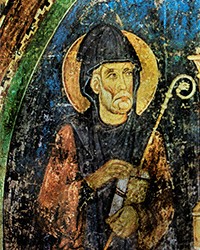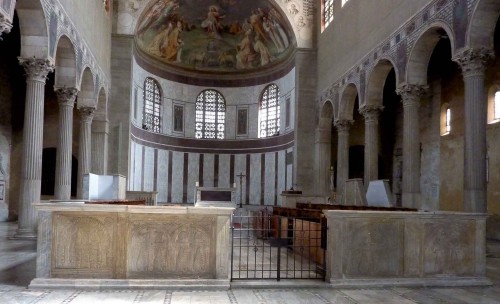
Church of Santa Sabina, interior, view of the apse
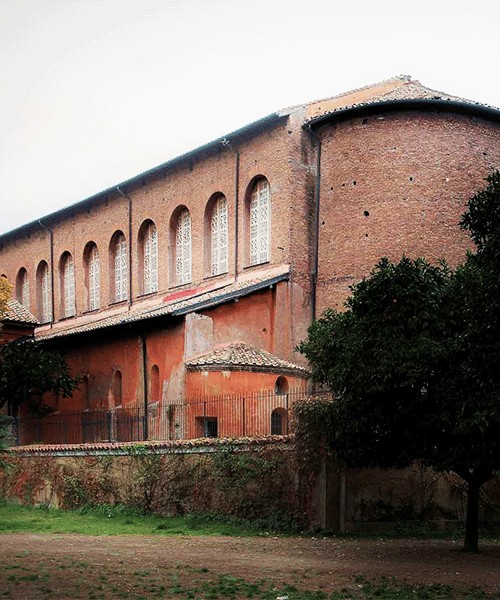
Apse of the Basilica of Santa Sabina on Aventine Hill
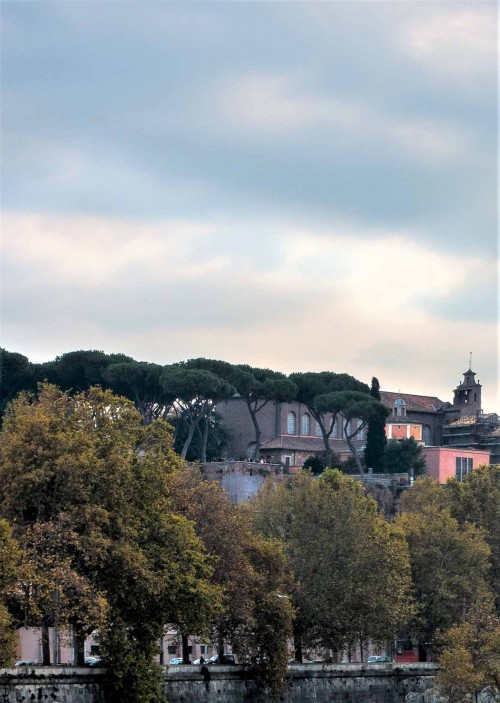
Basilica of Santa Sabina, apse of the Church of Santa Sabina on Aventine Hill
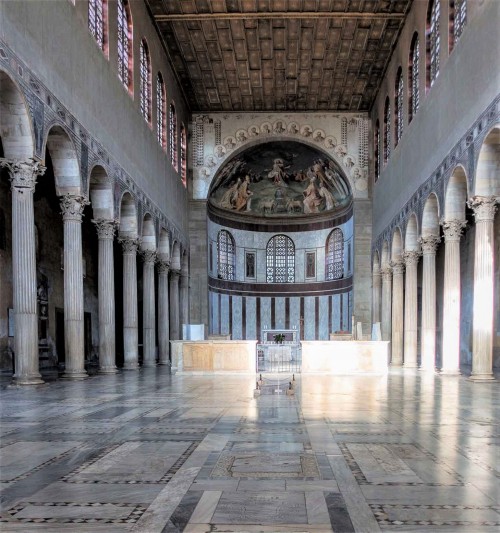
Santa Sabina, church from the V century
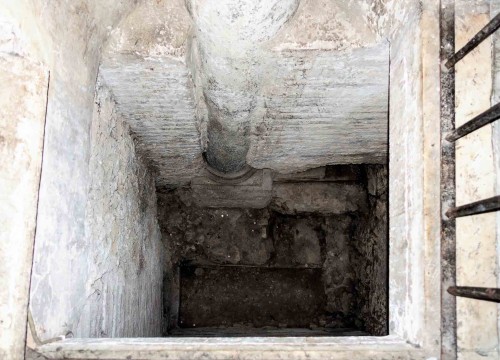
Church of Santa Sabina, side nave, remains of the ancient floor and fragment of a column of the old house of Sabina
The legend concerning her, was created in the VI century. It tells of a martyr Sabina, living in the II century A.D., a widow of a Roman patrician, Valentinus. She was turned onto Christianity by her slave Serapia. When Serapia was sentenced to death for her faith, Sabina buried her in her family mausoleum. Brutally punished for this deed, she herself was killed having her head cut off. In the place of her martyrdom a church was built in order to commemorate her – the Church of Santa Sabina on Aventine Hill.
The legend concerning her, was created in the VI century. It tells of a martyr Sabina, living in the II century A.D., a widow of a Roman patrician, Valentinus. She was turned onto Christianity by her slave Serapia. When Serapia was sentenced to death for her faith, Sabina buried her in her family mausoleum. Brutally punished for this deed, she herself was killed having her head cut off. In the place of her martyrdom a church was built in order to commemorate her – the Church of Santa Sabina on Aventine Hill.
Analyzing the information on the beginnings of this church one of the most beautiful early-Christian buildings, we may come to the conclusion that the legend of St. Sabina has no basis in reality. The patron of the church, was not a martyr, but the owner of the area on Aventine Hill, from whose name first the titulae (place of Christian meetings) took its name, and later the church itself.
Most likely for this very reason very few images of St. Sabina exist, both in Rome and in general in Christian iconography. This is stranger still, since this saint became the patron of the city on the Tiber. She is generally presented in the standard way – with a palm of martyrdom or a crown, sometimes with a book.


















